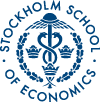No 521: The Swedish Model of Corporate Ownership and Control in Transition
Magnus Henrekson () and Ulf Jakobsson ()
Additional contact information
Magnus Henrekson: Dept. of Economics, Stockholm School of Economics, Postal: Stockholm School of Economics, P.O. Box 6501, SE-113 83 Stockholm, Sweden
Ulf Jakobsson: The Research Institute of Industrial Economics¸ IUI, Postal: Box 5501, SE-114 85 Stockholm, Sweden
Abstract: We analyze the development of the Swedish ownership model after WWII. The controlling ownership in Swedish firms is typically concentrated to one or two owners. Often, but not always, the controlling owners are Swedish families. Thus, the model resembles the typical corporate control model of Continental Europe. A distinguishing feature of the Swedish model is, however, that control is typically based on a smaller capital base than in other European countries. This feature is a result of a seemingly paradoxical policy when it comes to private ownership. Tax policy has consistently disfavored the accumulation of private wealth, but at the same time corporate law has greatly facilitated the wielding of control based on a small equity base.
Our analysis shows that the large gap between ownership and control makes the Swedish corporate control model both politically and economically unstable.
The major political threat to date has been the proposal of the Swedish TUC and the Social Democratic Party to introduce a scheme that would result in the gradual takeover of the Swedish corporate sector by union-controlled wage-earner funds.
After the political defeat of this proposal economic policy was changed in a more market liberal direction. This policy change has uncovered the economic instability of the model. The weak financial base of the controlling owners makes it difficult for them to take an active part in the current international restructuring of the corporate sector. Two forces are now seen as the major threat to the Swedish ownership model: A rapidly increasing foreign takeover of Swedish firms and the large state and corporatist pension funds. Their financial assets are far larger than those of today’s dominant control owners and extensive mandatory and/or tax-favored systems for pensions saving ascertains that their relative financial strength will continue to grow sharply.
Keywords: Corporate control; Corporate governance; Corporatism; Entrepreneurship; Ownership policy; Ownership structure; Swedish Model.
55 pages, First version: March 10, 2003. Revised: April 15, 2003. Earlier revisions: April 16, 2003.
Note: This paper was presented at the conference Who will own Europe? The internationalization of asset ownership in the EU today and in the future, arranged by the European Commission (DGECFIN), Brussels, February 27–28, 2003.
Full text files
hastef0521.pdfFull text
Questions (including download problems) about the papers in this series should be directed to Helena Lundin ()
Report other problems with accessing this service to Sune Karlsson ().
RePEc:hhs:hastef:0521This page generated on 2024-09-13 22:19:41.

